Why Costume Design For Teen TV Shows 'Work Twice as Hard' For Emmy Recognition
It may have more to do with who's watching the shows, as opposed to what the characters are wearing.
"Sex and the City," "Big Little Lies," "Russian Doll" and "The Assassination of Gianni Versace: American Crime Story." "Gossip Girl," "PEN15," "grown-ish" and "Chilling Adventures of Sabrina." What these shows all have in common? Talented casts, creative scripts and notable costume design. What they don't? The former list all won Emmy Awards for their often fashion-focused (and sometimes period-influenced) costumes. But the similarly acclaimed high school or college (or Academy of Unseen Arts) based series have never even received a nomination.
"I think some of my better work actually has been on 'grown-ish,'" says costume designer Michelle Cole. In 2018 and 2019, she received two — of her six — Emmy nominations for the boldly stylish "Black-ish," on ABC. For the third year in a row, she also submitted its college-set spin-off for consideration. "Is anybody looking at this thinking: 'It's Freeform. It's a teen show.' Because 'Gossip Girl' and all those young, beautiful shows and costumes... I don't think they have been nominated right?"
Nope. "Gossip Girl" costume designer Eric Daman actually received his first Emmy win in 2002 — as part of the R-rated "Sex and the City" costume team under Patricia Field. He went on to "Gossip Girl," which arguably made just as much of an impact on our cultural and fashion landscape. Daman costume-designed the CW series for its six-season run through 2012, and received no Emmy nods — although his peers did nominate him for a Costume Designers Guild Award in 2009. (It should also be noted that in 2015, the Television Academy, which is responsible for the Emmys, created contemporary categories to distinguish from the voter-beloved period and fantasy/sci-fi. Today, the four official Emmy costume design categories are contemporary, period, fantasy/sci-fi and variety/nonfiction/reality programming.)
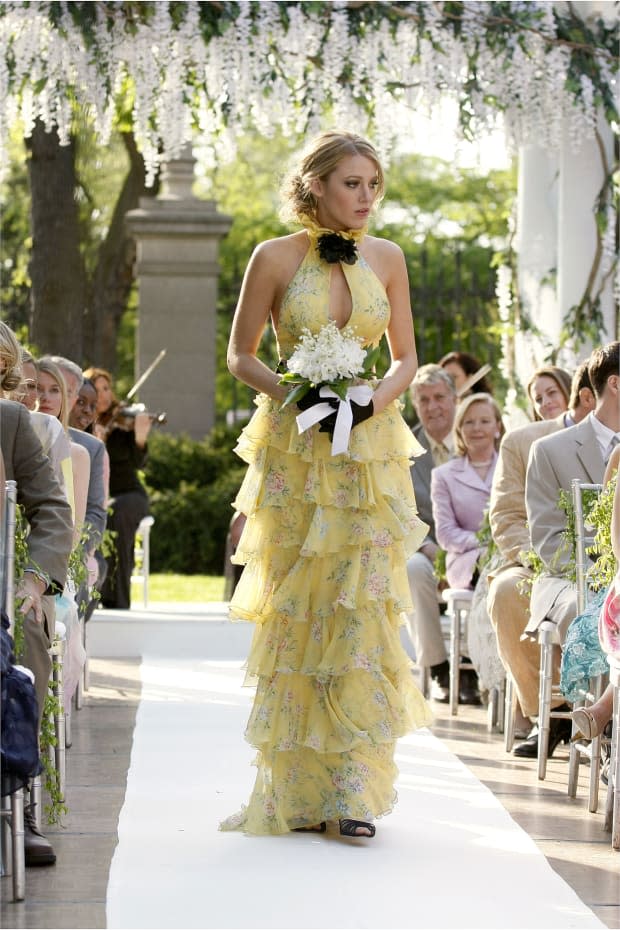
"When we did the original 'Gossip Girl,' we really wanted to editorialize and reinvent what clothing on television meant," says Daman, who will be redefining teen-television costume for a new generation with the show's HBO Max reboot.
"The influence of this show is wide and it should've been recognized in the same way 'Sex and the City' was for costumes," explains television critic (and longtime teen TV fan) Emma Fraser, over email. "And it isn't as if [the Academy] haven't nominated fashion-leaning costumes over the last few years. See 'Big Little Lies,' 'The Mindy Project,' Schitt's Creek, 'black-ish.'"
Related Articles:
The Unique Challenge of Designing Semi-Autobiographical Costumes
The Unsung Challenges of Contemporary Costume Design
For TV Costume Designers, Borrowing From Fashion Houses Hasn't Been Easy
The first barrier to Emmy recognition are the voters' viewing habits, which may not include what's considered "teen" TV.
"Look, I've said this before — and I get in trouble for it — but Academy voters are older and they don't watch everything. They watch a few shows and that's what they love," says Salvador Perez, 2015 Emmy nominee for "The Mindy Project" and president of the Costume Designers Guild of America. "If it's about a high school, 'adults' aren't going to watch it. 'Oh, that's high school. I don't want to watch that. I can't relate to that."
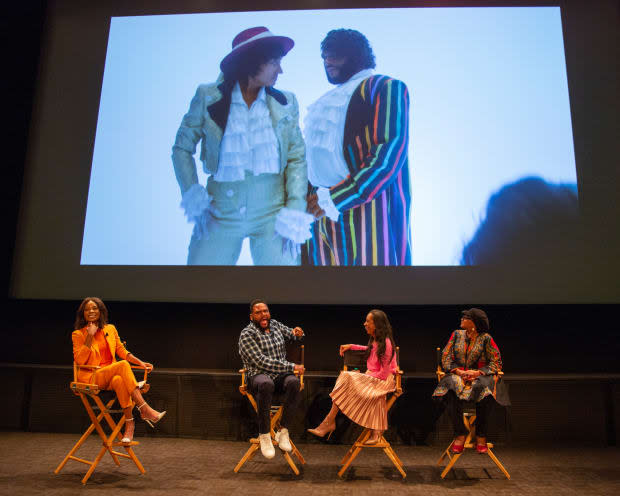
The age breakdown of the Television Academy's 25,000 members, and its 30 "peer groups" (including Costume Design and Supervision) is not publicly available. (In response to Fashionista's inquiry, a PR representative explained "joining the Academy is predicated on working in the industry. Hence, demographic information simply isn't something required.") Based on past voting results, one could surmise that membership does lean older and not-as-diverse. However, a change in voting rules enacted last November — where only "Active Members," can vote for nominees and final winners — will hopefully encourage younger and more diverse membership. Still, the category requires an annual $200 fee, which Perez is concerned may be a barrier for "the younger generation" to join.
This Emmy season is different, too. Because of the Covid-19 crisis, the Television Academy officially suspended all "For Your Consideration" events. In a non-pandemic world, deep-pocked streaming services like Netflix and networks would campaign with member events, featuring screenings, Q&As, free food and perhaps a chance to mingle with the stars, like ABC did the two times Cole received nominations for "Black-ish" (above). Perez recalls the non-social-distancing days of yore when Netflix — which clocked 27 wins out of 117 nods last year — took over the Hollywood Athletic Club for a week.
Traditional DVD screeners permanently went all-digital this season, too. Perez is also skeptical that established voters will embrace the technology to try a new show. "Punch in that 18-digit code? They're not going to," he says.
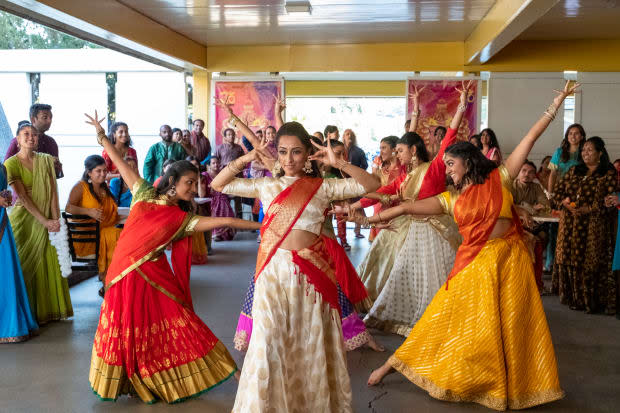
This year, Perez — who also costume-designed the first three seasons of critically-acclaimed teenage detective series, "Veronica Mars" — submitted his work on coming-of-age (and similarly critically-beloved) series, "Never Have I Ever." He selected the moving "... Felt Super Indian" episode, centered around the Hindu Indian Ganesh Puja festival, which mixed contemporary costume with traditional saris and dhotis on the principles and 180 background players. He's hopeful that voters ventured out of their comfort zone to make the series the number one streamed show, worldwide, on Netflix.
Based on the ABC show's 15 nominations across categories, voters clearly watch "black-ish." But will they click over to younger-skewing Freeform for activist and Harvard undergrad Yara Shahidi's "grown-ish?" After all, both shows regularly tackle race, politics and social justice issues, plus boast high style and storytelling costumes by Cole.
"There's still, tragically, that assumption that because something is targeted to young women, it's by default trivial and inconsequential. That's a real shame because these shows, often, they're doing really complex and interesting things," says Dr. Helen Warner, author of "Fashion on Television: Identity and Celebrity Culture" and Senior Lecturer, Cultural Politics, Communication and Media Studies at the University of East Anglia.
"It's really about marketing and perception," adds Perez.
Networks and designers themselves could try and highlight more relatable aspects to a wider swath of voters.
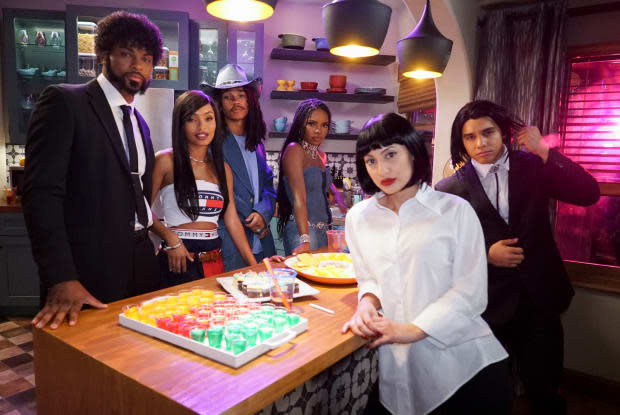
Cole selected the mid-season "grown-ish" finale, centered on Zoey (Shahidi) making a life-changing decision during her pop culture-themed 21st birthday party. The veteran costume designer hopes the voters recognize the creativity and hard-work behind all the custom-built costumes, as well as the nostalgia — which hits the '90s-obsessed millennial and Gen Z viewers and voters who have fully-formed memories of the decade. Zoey dresses as Aaliyah, evoking a memorable Tommy Hilfiger bandeau look, while her friends recall era highlights: Quentin Tarantino's 1994 hit, "Pulp Fiction" and Jennifer Lopez in the 1997 biopic "Selena." (Cole received her first four Emmy nods in the '90s for the groundbreaking sketch comedy show, "In Living Color.")
"Everybody knows all the movies. They know all the characters. It was very '90s," explains Cole, adding, "It resonates with a lot of people."
Daman also senses a disconnect between what what viewers want to see from young adult fare and what the period-piece-leaning voters gravitate toward. "There's a hunger currently to be a a little more realistic, a little more gritty and a little cinema verité about it," he says, about the current aesthetic of teen shows. "But in the Emmy [voters'] eyes, everyone loves costume and period drama. Those are big broad strokes that really catch people's eyes and doing that with contemporary teen television is very challenging."
He lauds Heidi Bivens's costume design on "Euphoria," which helped support mental health, addiction and assault storylines, as a notable example of the Gen Z teen TV class. "It felt elevated — just enough — but you felt the grit," he says. "There was a realness to all of it. Just very inspiring, moving and very, very well-executed."
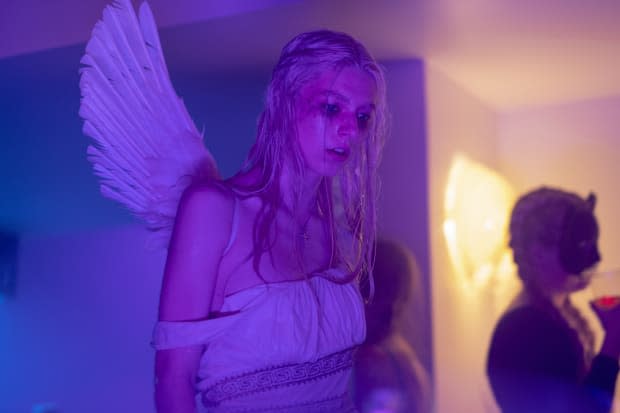
Of course, there's also bold fashion as another character. For a television show's adult counterparts, it garners accolades — but for high school and college-age characters, it often works in the opposite direction. Which feels contradictory, as teenage stories, full of self-discovery and high-expectation events, lend themselves to expression through fashion.
"Much like actual adolescence, there is an element of experimentation and trend-driven frivolity about teen costume design," says Fraser. "There is more freedom to have fun with fashion.
But the fashion "frivolity" could land as a marketing ploy. Warner points to the last teen content boom in the late '90s and early 2000s, when major fashion brands and movie and TV studios linked high-profile placement deals. For instance, in 1999, American Eagle edged out J. Crew to become "the official provider of cargo pants, surfing shirts and halter tops" on "Dawson's Creek" in 1999 — dubbed a "fashion coup" by the Wall Street Journal.
With the fashion-forward teen show resurgence in the 2010s, old notions could arise, especially with updated cross-promotional campaigns, like the many "Stranger Things" collaborations. "Partly, that's been explained away as, 'That's just appealing to this group as consumers,'" Warner says, adding, "I wonder if that in some ways has overshadowed the more creative things that are happening in those shows." Voters may view costumes — especially stylized and trend-driven ones — as "a purely commercial endeavor," versus "an artistic" effort.
The modern-day setting of most teen shows may also play into the misconception that contemporary costumes aren't as deserving because they're shopped or borrowed. Although, we know that contemporary is just as challenging, creative and labor-intensive as period. "But now there is an entire award dedicated to contemporary there is no longer this excuse," says Fraser.
Plus, not all contemporary shows are reflective of the 2020 we see in every day life.
"The current retro teen show trend has led to some fantastic costumes including Angus Straithie's work on 'Chilling Adventures of Sabrina,' which mixes Edwardian with the 1940s and 1960s. The recent season also featured a regal look that gives 'Game of Thrones' a run for its money," explains Fraser. "Keeping with this universe, 'Riverdale' also has some wonderfully wild creative moments from the annual musical episodes to the '90s flashback episode. Even the regular episode-to-episode costumes by Rebekka Sorensen-Kjelstrup are wonderful and help tell the wider story."
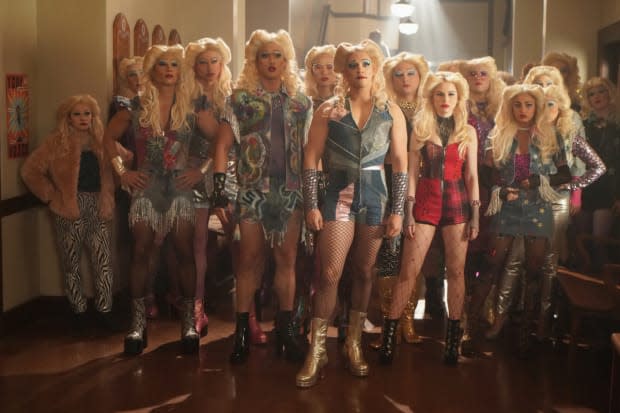
For her first Emmy submission after five seasons, the "Riverdale" costume designer selected the episode, "Wicked Little Town," featuring performances of songs from "Hedwig and the Angry Inch." Putting the "Riverdale" twist on the Tony-winning rock musical, Sorensen-Kjelstrup custom-built (or customized) the triple-threat cast's many changes and choreographed performances. "It was such a huge undertaking," she says.
Sorensen-Kjelstrup hopes the voters recognize the "creative aspects of playing with colors, the denim, spray-painting, patchwork, iron-work, beadwork and bling-work."
A look back at decades of Emmy winners highlights a thread linking the few teen TV costume winners: music and dance. The performing arts high school-set "Fame" won in 1982 (Marilyn Matthews) and 1987 (Nanrose Buchman), while "Glee" earned four-time Emmy winner Lou Eyrich two nominations, in 2010 and 2011. "That '70s Show," which would fall under the period category today, won Melina Root an Emmy in 1999, for "That Disco Episode," which involved dance lessons.
"[Teen TV costumes] have to work twice as hard to have the recognition," concedes Warner.
Perez's submitted episode of "Never Have I Ever" includes a lively Bollywood music and dance sequence requiring stunning traditional dress. Plus, Arianne Phillips earned a Tony nomination for the original "Hedwig" costumes on Broadway in 2014, so that could prove promising for Sorensen-Kjelstrup. Given that in 1997, both Dianne Kennedy and Madeleine Stewart received nominations for the costumes in the original "Sabrina the Teenage Witch" and the Edwardian-era "Road to Avonlea," respectively, maybe there's a chance for their modern-day equivalents, like Netflix's "Chilling Adventures of Sabrina" and Hulu's "The Great."
Voters, just keep an open mind — and also maybe step away from the screeners.
"Clothes are seen as trivial and women are seen as trivial and teens, in particular, are seen as trivial and are dismissed when, in actual fact, we all need to look at the world around," says Warner. "Young women are doing amazing things. This generation is really saving the world."
Never miss the latest fashion industry news. Sign up for the Fashionista daily newsletter.
